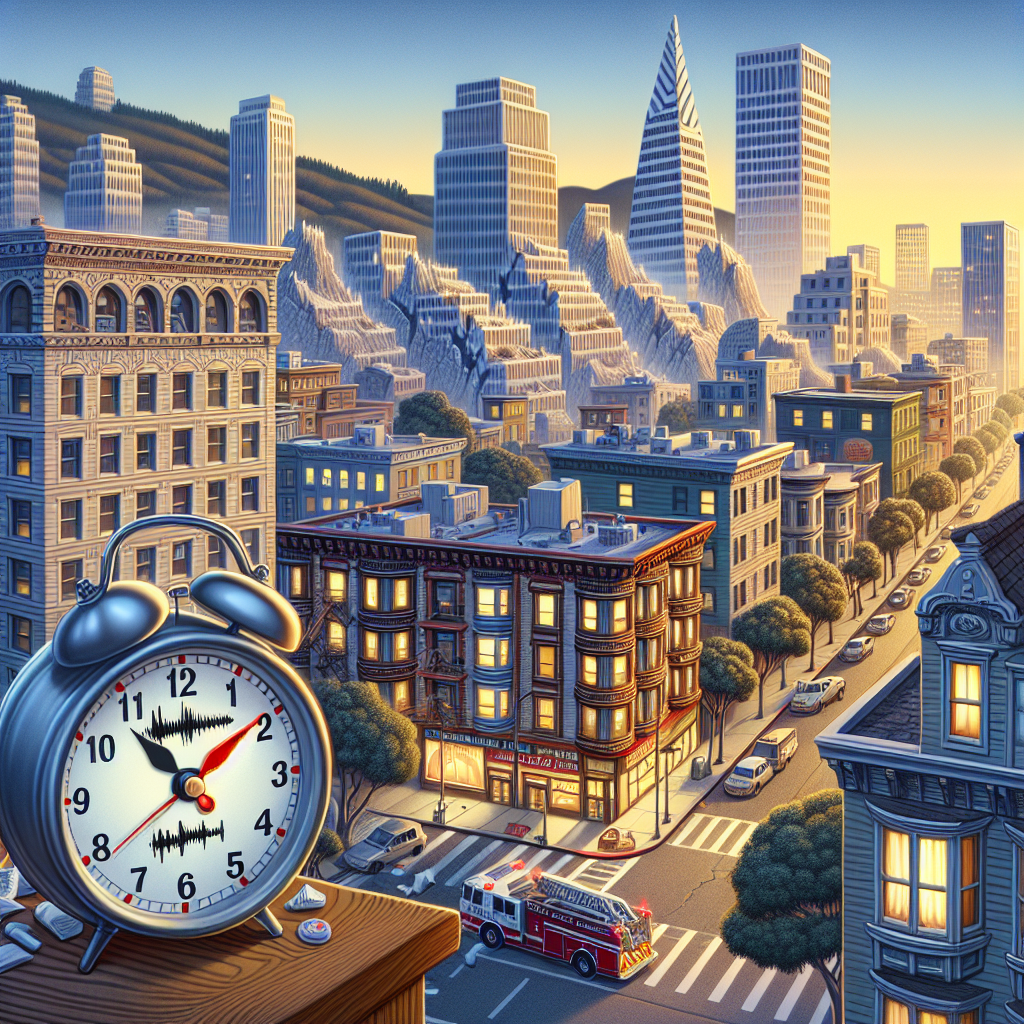On January 10, 2025, at 7:02 a.m., a 3.7-magnitude earthquake struck San Francisco, causing strong tremors throughout the city. According to the San Francisco Fire Department, there were no casualties reported.
Preliminary reports from the United States Geological Survey (USGS) suggest that the earthquake may have originated from the San Andreas Fault. The epicenter was located in a coastal area northwest of the San Francisco Zoo, about 3 miles away, and approximately 6 miles northwest of the Golden Gate Bridge. The quake’s depth was measured at 5.2 miles, which is shallower by 1 mile compared to the 7.0-magnitude earthquake that hit Humboldt County’s coast in December last year. That previous earthquake triggered a tsunami warning, which was not the case this time.
Residents in the western part of the Bay Area felt brief yet intense shaking. Feedback from social media indicated that neighborhoods across San Francisco, including the Richmond District, Twin Peaks, Nob Hill, and the Peninsula, experienced noticeable tremors.
One woman in San Francisco, Ms. L, described her experience to a local newspaper, saying, “When the earthquake happened, I was in deep sleep and suddenly woke up to a strong shaking, feeling the house and the floor moving.”
San Francisco’s newly appointed Mayor, Daniel Lurie, issued a statement promptly following the earthquake, stating, “I have immediately activated the city government’s response actions this morning. Our first responders have been deployed citywide to ensure the safety of residents. We are actively sharing information and providing necessary tools for citizens to protect themselves and their families during such events.”
“I want to assure the residents of San Francisco that we are prepared for events like this. While monitoring the impact of this earthquake, I have been collaborating with the police department, fire department, and emergency management agency to ensure the best measures are taken to safeguard the city during natural disasters. Our thoughts are not only with the victims of natural disasters across the state and nation but we will also ensure that San Francisco remains prepared at all times.”
The USGS also reported that there have been aftershocks following the earthquake.
Based on fault lines shown in seismic maps, it is predicted that the Bay Area could experience a 6.7-magnitude or larger earthquake before 2043.
San Francisco’s Emergency Management Agency advised on social media that this earthquake serves as a reminder for everyone to prepare emergency supplies, make plans, and be ready for a possible large-scale destructive earthquake.
This earthquake coincidentally occurred on the 168th anniversary of the 1857 Fort Tejon Earthquake, just one day after. The Fort Tejon Earthquake was a 7.9-magnitude quake that the USGS referred to as Southern California’s last major seismic event.
Although the rupture length during the 1857 quake was shorter than the 1906 San Francisco earthquake, it caused more intense ground movement: reports at the time suggested that the ground uplifted by as much as 30 feet in certain areas.

